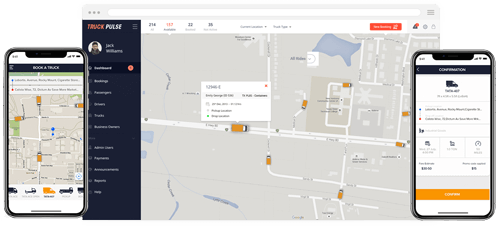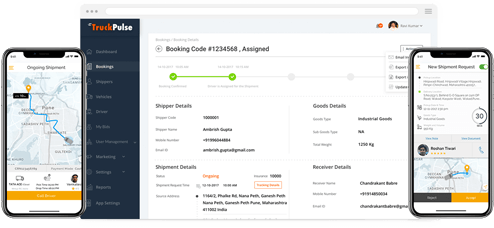Do you know the meaning of ‘dead-heading’? Or what does “dunnage” mean with respect to the logistics and transportation industry?
Well, if you don’t know, this guide will help you navigate through the nitty-gritty of logistics & transportation terminology.
In this post, we will explain the most frequently used logistics terms, especially in the trucking industry.
And there’s no doubt that after reading this post, you will become aware of the key terms commonly used in this industry.
Without further ado, let’s start decoding the logistics & transportation terminology:
Commonly Used Logistics & Transportation Terms
- Accessorial Charge
In shipping, accessorial charges are made for any additional, special or supplemental assistance provided. Common accessorial charges, also known as surcharges, include currency adjustment factors (CAF) and terminal handling charges, congestion charges etc.
- Adjustments
The additional costs incurred after shipping are known as adjustments. These expenses can be added due to the difference between the quoted details about the shipment and the actual details after the delivery. Also, adjustments can be done for any extra services provided.
- Agent
An agent is the designated person who has all the responsibilities for handling cargo and shipment. The person also deals with documentation and supervise customs procedure for sending goods from one place to another.
- All-Risk Insurance
This insurance covers loses and/or damages during the shipment of goods. It ensures that the full commercial value of a shipment can be declared and covered against any unforeseen incidents. Thus the customers stay aware of the liabilities involved before shipping and get peace of mind until the arrival of the goods.
- Air Ride Suspension
This is one of the commonly used trucking terms. Air ride suspension supports the load on air-filled rubber bags. Compressed air is supplied by the same engine-driven air compressor and reservoir tanks which provide air to the air brake system.
- Axle Load
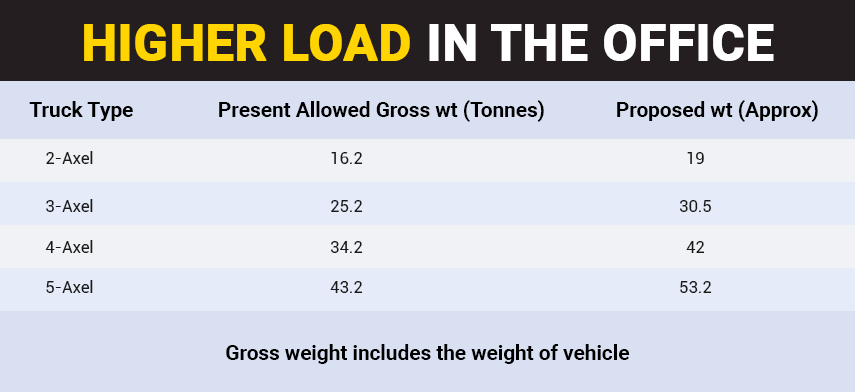
When it comes to discussing trucking terminology, another important term that must be mentioned is axle load. The load of a vehicle applied through the wheels at both ends of an axle and equaling twice the wheel load is called Axle Load. Currently, in India, a two-axle truck is allowed to carry 16.2 tonnes including the vehicle weight. However, according to a recent news, the government will increase the maximum axle load of heavy vehicles by 20%-25% to bring it on a par with international norms. This decision of the Government will surely bring a great boost to the trucking industry and help in minimizing the transportation cost of goods.
- Backhaul
Backhaul, also known as headhaul, is the return movement of a commercial truck that is transporting freight back from its delivery point to the original point.
- Bill Of Lading (BOL)
A paper document where both shipper and carrier acknowledge the receipt of goods for transport is called the bill of lading. This bill is actually an itemized list of goods contained in a shipment. All the necessary information about the cargo, such as the nature of the cargo, amount of cargo by weight, size and/or the number of pieces, and the origin and destination of the cargo, is mentioned in the bill of lading.
- Blind Spot
In a commercial vehicle, if there is any area that is not visible to the driver either through the windshield, side windows or mirrors, then that area is called blind spot.
- Bobtail

A bobtail truck, also known as a straight truck, travels from one place to another without a trailer attached. Bobtailing often happens when a contracted truck driver is under dispatch.
- Bulk Freight
Bulk freight refers to the freight that is not contained within packages or containers. Usually, bulk freight comes in the form of liquid or a granular form such as sand or crude oil.
- Cartage
This trucking term refers to the process of shipping goods within the same city or over a short distance.
- Commercial Driver’s License (CDL)
This license certifies that the holder is able to operate vehicles weighing 26,001 pounds or greater in public places and on highways. It also serves as an identity proof of a driver. To get this license, issued by the Regional Transport Offices of various states, one must pass both the written and practical tests.
- Compliance, Safety, and Accountability (CSA)
This is a Federal Motor Carrier Safety Administration (FMCSA) program, designed to provide motor carriers and drivers with attention from the administration and state partners about their possible safety issues. This program is aimed to minimize the possibilities of large truck and bus crashes, injuries, and fatalities.
- Concealed Damage
Concealed damage refers to such a damage that cannot be seen until an item’s package is opened. Being a logistics service provider if you want to reduce the rate of concealed damages, inform your customers that they hold the right of inspecting a package properly before signing the Bill Of Lading. Also, instruct your clients that they can refuse a product if its damage is beyond repair and ask them to mention the issues on the delivery receipt.
- Consignee
The consignee is actually the person who receives a cargo shipment. This person’s entity is mentioned in the Bill Of Lading. This person has the right to claim a merchandise and is usually considered as the legal owner for customs purposes.
- Container
A container is a rectangular-shaped and a standard sized shipping box that is used to ship goods. International shipping containers are 20’ or 40’ long, designed to fit in ships’ holds, whereas domestic containers are up to 53’ long, designed for highway and rail use only.
- Cubic Capacity
The total freight load capacity of any truck is measured in cubic feet. The cubic capacity is the total load in cubic feet which cannot be legally overshot.
- Dead Heading
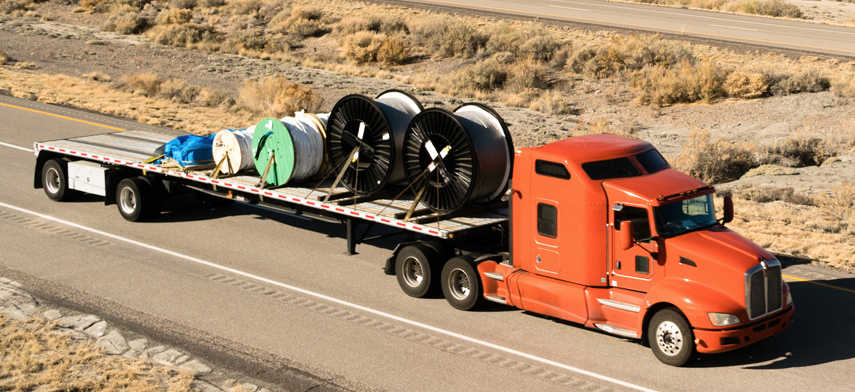
Operating a truck with an empty trailer is called deadheading. Such a process is necessary for owner-operators who must drive a particular distance to pick up a load.
- Drayage
This is a process of transporting items over short distances. It’s a part of the supply chain process and commonly used for minor transporting of goods.
- Dedicated Truck
Dedicated trucking involves fleets dedicated to a definite percentage of its fleets to customers who can lock in capacity through long-term contracts. This ensures capacity for shippers, provides fleets a consistent base of customers and assures drivers a predictable number of miles along familiar routes that they may drive on a daily basis. In short, it is a win-win situation for shippers, trucking companies, and receivers.
- Door-to-door
The concept of door-to-door is involved with the movement of a cargo, handling the shipment from the shipper to the consignee.
- Dunnage
Dunnage refers to materials used for creating separation in cargo to protect goods from damages. It also provides space to keep cargo from moving or falling.
- Electric On-Board Recorder (EOBR)

This is a device, used for recording various data like truck speed, engine rpm, idle time and other useful information for trucking management.
- Embargo
This refers to any event that prevents an activity of import or export to be handled, for either specific products or specific countries.
- Exceptions
When an issue of shortage or damage appears at the time of delivery, an exception is noted in the Bill Of Lading before it is signed to notify the problem with the shipment.
- Exempt Carrier
A logistics company that transports goods exempted from Interstate Commerce Commission economic regulation is called exempt carrier.
- Expedited
This is a procedure of shipping at a faster rate than usual. Often it includes team drivers, overnight and/or air services to make the shipping faster.
- Full Container Load (FCL)
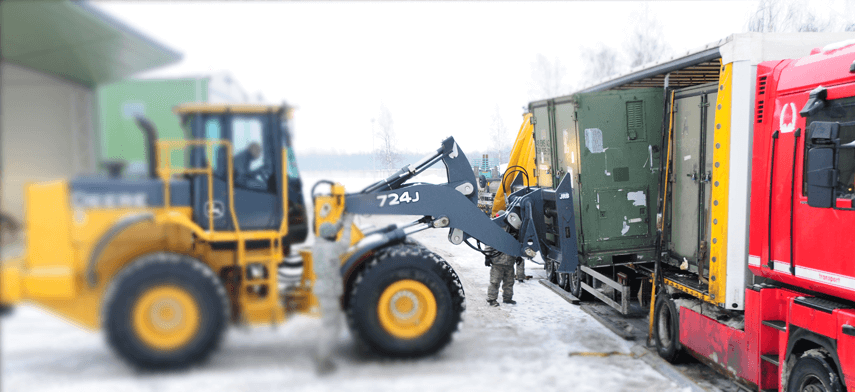
This term is used when the shipper has all the responsibility of loading a shipping container and paying all the associated costs. FCL shipping is considered as a cost-effective shipping process when the volume of the cargo is more than 15 cubic meter.
- Hot Shot
Small trailers, often used for moving light loads or Less Than Container Load (LCL) shipping and pulled by larger pickup trucks, are called Hot Shot. These trailers are usually 24-40’ long and cannot manage as much weight as a regular tractor trailer does.
- Intermodal
Be it truck-rail-truck shipping, truck-air shipping or truck-ship shipping - whenever there are two or more transportation modes are involved, the entire process is called intermodal.
- Less Than Truckload (LTL)
In LTL shipping, goods are moved from one place to another by different transportation modes. It often makes several stops and unpacks and re-packs goods. The shipment takes longer to reach the destination as compared to Full Truckload Shipping. However, it gives you the chance of saving a lot on shipment cost.
- Line-haul, Local & Over-The-Road Drivers
Line-haul drivers, also known as regional drivers, drive trucks following a set route from city to city. On the other hand, local truck drivers pick up and deliver packages along a city route. And over-the-road truck drivers travel cross-country to deliver freight and usually take rest within a berth in the truck cab.
- Nested
This is involved with LTL shipping. Nested refers to stacked goods in LTL shipping where one item goes into another and thus reduces space occupied by the combined freight.
- Owner-Operator
A self-employed commercial truck driver who operates own truck is known as an owner-operator.
- Pallet Jack
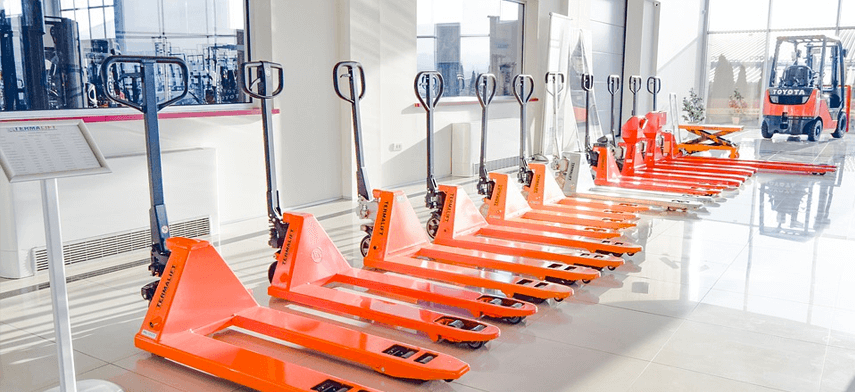
A pallet jack is a tool, used for lifting and moving pallets. This is highly useful in warehouses for moving pallets safely.
- PRO Number
This is a series of 7 to 10 digits, used by carriers as a reference for freight movement. This number is useful for referring to any particular shipment and tracking it.
- Reefer
This is a refrigerated container, having a trailer and insulated walls. Reefer is commonly used for transporting food items.
- Thru Trailer Service (TTS)
This is applicable in international shipment when cargo stays on the same trailer. As compared to trans load where the products move from one trailer to another to keep a shipment going, TTS is a safer way to transport goods.
- Volume Rate
This is an LTL shipping term for rates which are made subject to a minimum weight of 7,000 pounds or more, or cubic volume overshooting 750 cubic feet.
- Warehousing

Warehousing has a significant impact on the operational activities in the logistics business. Freight shippers usually store goods in warehouses until the shipping. Maintaining inventory in the warehouse adds value to the overall business.
Wrapping Up!!
Using our extensive knowledge and experience in the logistics industry, we have created a go-to resource, compiling some essential transportation terms, especially from the trucking business. Whether you are new to this industry or just want to brush up your knowledge on freight terms, this guide will surely help you have a profound idea about the freight shipping process.
Author's Bio

